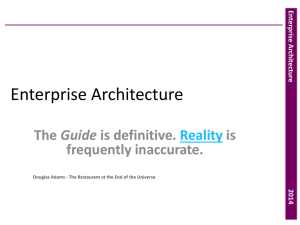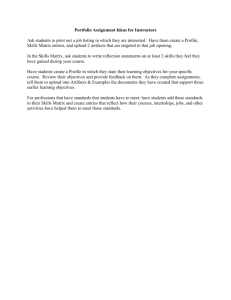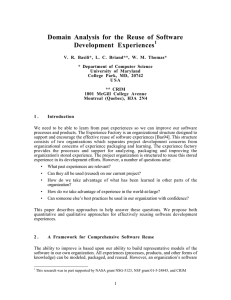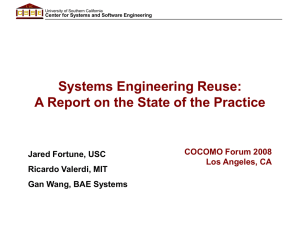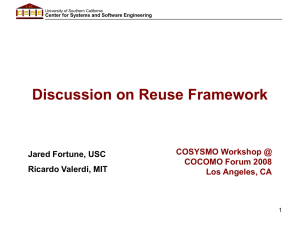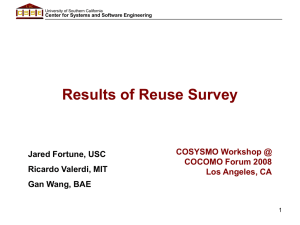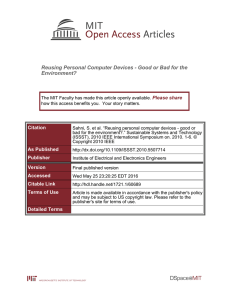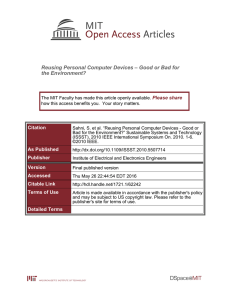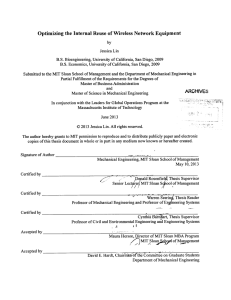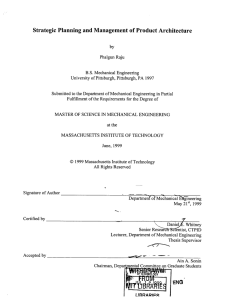Architecture and Software Product Lines
advertisement
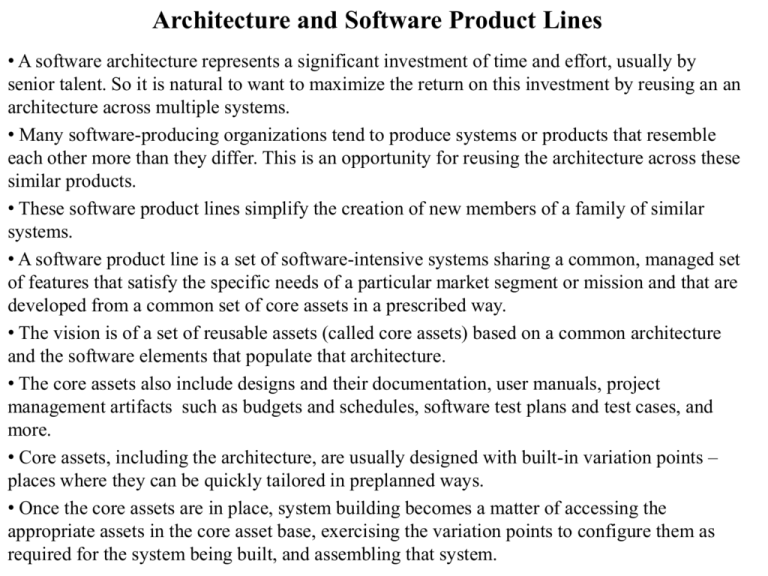
Architecture and Software Product Lines • A software architecture represents a significant investment of time and effort, usually by senior talent. So it is natural to want to maximize the return on this investment by reusing an an architecture across multiple systems. • Many software-producing organizations tend to produce systems or products that resemble each other more than they differ. This is an opportunity for reusing the architecture across these similar products. • These software product lines simplify the creation of new members of a family of similar systems. • A software product line is a set of software-intensive systems sharing a common, managed set of features that satisfy the specific needs of a particular market segment or mission and that are developed from a common set of core assets in a prescribed way. • The vision is of a set of reusable assets (called core assets) based on a common architecture and the software elements that populate that architecture. • The core assets also include designs and their documentation, user manuals, project management artifacts such as budgets and schedules, software test plans and test cases, and more. • Core assets, including the architecture, are usually designed with built-in variation points – places where they can be quickly tailored in preplanned ways. • Once the core assets are in place, system building becomes a matter of accessing the appropriate assets in the core asset base, exercising the variation points to configure them as required for the system being built, and assembling that system. Architecture and Software Product Lines What Makes a Software Product Line Work? • The potential for reuse is broad and far-ranging, including • common requirements for similar systems • reuse of architectural design for similar systems • software elements are applicable across individual products • modeling and analysis can carry from product to product • Testing artifacts can be reused for similar systems • Project planning artifacts can be reused for similar systems • Each of the above as core asset can be imbued with its own variation points that can be exercised to build a product. • Artifacts reuse in turn enable reuse of knowledge: • Process, methods, and tools • People • Exemplar systems • Defect elimination Architecture and Software Product Lines Product Line Scope • A product line’s scope is a statement about what systems an organization is willing to build as part of its line and what systems it is not willing to build. • A product line scope is a critical factor in the success of the product line. • Narrow scope: the products only vary in a small number of features, resulting in an insufficient number of products will be derived to justify the investment in development. • Broad scope: the products vary in kind as well as in features, resulting the effort required to develop individual products from the core assets is too great to lead to significant savings. • The problem in defining the scope is finding commonality that can be exploited to substantially reduce the cost of constructing the systems that an organization intends to build. • The scope definition is vital to the product line architect because the scope defines what is common across all members of the product line, and the specific ways in which the products differ from each other. • The fixed part of a product line architecture reflects what is constant, and the architecture’s variation points accommodate the variations among products. Architecture and Software Product Lines The Quality Attribute of Variability Architecture and Software Product Lines The Role of a Product Line Architecture • Of all the assets in a core asset repository, the software architecture plays the most central role. • Tactical reason: the importance the architecture plays in building products in a product line • Software architecture is ideal for handling variations, because all architectures are abstractions that admit multiple instances. • Every architecture is a statement about what we expect to remain constant and what we admit may vary. • Products in a software product line exist simultaneously and may vary in terms of their behavior, quality attributes, platform, network, physical configuration, middleware, scale factors, and so forth. • Strategic reason: the capability it imparts to an organization outside the realm of an existing product line, mainly resulting from reusing core assets for multiple product lines. • A product line architect needs to consider three things that unique to product line architectures: • Identifying variation points by using the scope definition and product line requirements as input • Supporting variation points by introducing variation mechanisms. • Evaluating the architecture for product line suitability Architecture and Software Product Lines Variation Mechanism • Primary architectural variation mechanisms • Inclusion or mission of elements • Inclusion of a different number of replicated elements • Selection of different versions of elements that have the same interface but different behavioral or quality attribute characteristics • More sophisticated techniques • Extension points • Reflection • Overloading Architecture and Software Product Lines Variation Mechanism Architecture and Software Product Lines Evaluating a product Line Architecture • What and how to evaluate: variation points to make sure they are appropriate • to offer sufficient flexibility to cover the product line’s intended scope • to allow products to be built quickly • not to impose unacceptable runtime performance costs. • When to evaluate • An evaluation should be performed on an instance or variation of the architecture that will be used to build one or more products in the product line.

